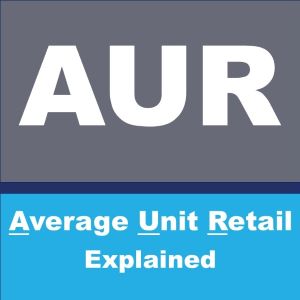The weakest link in the retail supply chain will always be the same: communication. Human error, wrong information on purchase orders, confused delivery times and locations all cost retailers money. Unfortunately, this lost money gets made up for in price increases.
To prevent higher prices, retailers and suppliers work to improve the supply chain. Part of the goal is to make communication (verbal and electronic) better. One tool in better business communication is simplifying the process of identifying companies and destinations globally through a universal code. This code is the global location number.
What Is a Global Location Number (GLN)?
A Global Location Number (GLN) is a unique 13-digit number used to identify the legal entity and physical location of a business. A company may have more than one global location number depending on its size and nature of business.
What Do GLNs Identify?
As a globally unique identifier, the GLN answers two questions: “who” and “where.” In supply chain, the specifics of the “who” and the “where” are coded in the GLN to provide information about physical locations, digital locations, legal entities, and functions.
Physical Location
Physical locations are defined as tangible places that can be identified by an address, coordinates, or use of other locators. A separate GLN can be assigned to a physical location that is within another physical location. All sub-locations are considered specific spaces on or within a physical location. In some instances, these sub-locations may be identified with a GLN extension component.
Any physical location must be issued its own GLN if its access address is not the same as other physical locations and there is a business need.
Not all locations remain in a permanent place. A mobile location can also receive a GLN. Mobile locations in need of a GLN would be certain types of shipping vessels, mobile hospital units and service vans, etc.
Digital Location
A digital location simply refers to a non-physical electronic address that is used for data transfer between computer systems. The digital location GLN includes the related legal entity and can also include development status and network address of the location and the system administrator’s contact details. If a digital location’s purpose is different from other digital locations in the company, it needs its own GLN.
Legal Entity
A legal entity is defined as any institution, government body, business, charity, department, or individual, or that has legal standing and is able to enter into agreements or contracts. Legal entities need their own GLNs when the legal name and/or legal address and/or legal registration number is not the same as other legal entities.
Function
When a GLN is assigned to a function, this refers to a department or subdivision of a company based on a specific task executed by that group. A function usually needs its own GLN when its business purpose differs from other functions of the company. Overall, there must be a business need to separately identify the function across the organization. When no separate functions are needed apart from the normal business practice, the legal entity GLN represents all functions of the company.
How Are Global Location Numbers Structured?
A global location number is made up of 13 digits. The number is not randomly assigned to a business or identity. They are broken up into three sections specific to what the number is created to identify:
- Company prefix: The first seven to nine digits of a GLN represent the company prefix. The company prefix is not created by the company. It is assigned by a representative of GS1 (the company issuing GLNs) to the requesting company.
- Location reference: The company prefix is followed by the location reference number. The requesting company itself will assign the location reference number to identify a specific location.
- Check digit: The last section of the GLN is the check digit. The check digit is a calculation of the first twelve digits of the GLN. It serves to verify the integrity of the number.
When Are Global Location Numbers Used?
One of the most common uses of global location numbers is company identification and destination information on transactional documents. The GLN is a required identifier on purchase orders, payment requests, and delivery orders.
For Walmart suppliers, it is required to provide the GLN on the N1 ST segment element 04 on all EDI 810s and all invoices without purchase orders.
What Are the Benefits of Global Location Numbers?
The overall benefit to GLNs is simplifying locating essential parts of the supply chain. Specific benefits by area include:
Company or Destination Location
A common question among new suppliers is “Why would I need a global location number when my business and business partners have postal addresses?” As the supply chain relies more on electronic processes, postal codes are not sufficient identifiers.
Look at the following three postal addresses:
- Walmart, 702 SW 8th Street, Bentonville, AR 72716
- Walmart Stores, Inc., 702 South West 8th Street, Bentonville, AR 72716
- Walmart Corporate Office, 702 SW 8 Str., Bentonville, Arkansas, 72716
If these addresses were on three separate packages, a human being could tell they were all intended to go to the same place. They are all the same address, just written slightly differently. Electronic processes, on the other hand, require unique and unambiguous identifiers. So a simple postal address that can be written multiple ways is a bad identifier for the average IT supply chain system.
The global location number solves this issue. The GLNs uniquely and unambiguously label a company and its location in an electronic process.
What Are Walmart’s GLN Numbers?
While Walmart requires GLN numbers of its suppliers, the company also has numbers for its company. Two examples are:
- Walmart US GLN: 0078742000008
- Walmart CA GLN: 0681131000000
Global Location Number FAQ
Who needs a GLN?
Any entity taking part in the supply chain needs a global location number. This includes suppliers, manufacturers, distributors, business units and locations, and other participants in the supply chain.
Who issues a GLN number?
Global location numbers are issued by Global Standards One (GS1). GS1 is an international organization that produces and maintains industry standards for barcodes, company prefixes, and other supply chain identifiers.
How do I find my GLN?
To find the GLN for a company, simply enter the appropriate information in this lookup tool in the GS1 database.
What is the difference between a GLN and GS1?
GS1 is the overall system of standards for retailers. These communication and tracking standards allow retailers and suppliers to track products at every step of the supply chain.
The GLN is a unique number issued by GS1 used for identification and tracking in the supply chain.
Is the GLN the same as a company prefix?
A company prefix is actually part of the GLN. The first seven to nine digits of the GLN make up the company prefix.
Can a company have more than one GLN?
Yes. While some businesses just want to have one GLN for their whole company, others allocate individual GLNs for each location they wish to identify.
How much does a GLN cost?
As of this posting, obtaining a GLN is around $30. There is no annual fee for a GLN.
Conclusion
If you are reading this blog, chances are you are a new supplier and are preparing to work with a retailer. Obtaining a global location number is one small piece of that huge puzzle!
The experts at 8th & Walton can help prepare you in your journey with Walmart. If you have more questions about Walmart’s requirements or our services, request a free 15-minute consultation.



